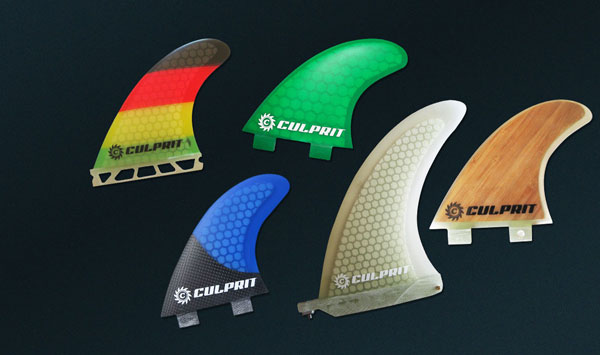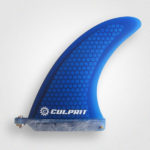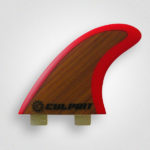culprit-news
Finding Great Surfboard Fins
A surfboard fin is a useful tool because it provides stability and control. When considering a new purchase, the user should reflect on the board’s normal use, stability, and design. As there are more than one type of fin, performance expectations will vary. The surfboard and fin are items that will be used for a long period of time. As with any large purchase, it is a good idea to test the equipment before making a decision.
Terms and Measurements
Terms and measurements that apply to surfboard fins differentiate between the expected performance of the fin in the water:
- Toe – The angle of the fin to the center stringer, the toe allows the water pressure to build outside of the fins. This enables better response for the rider.
- Cant – This refers to the angle of the fin in relation to the bottom of the surfboard. Increasing the fin’s cant will produce greater turning response. Decreasing the cant will improve the board’s speed.
- Foil – This is the shape of a surfboard fin, which is the curvature consisting of the thickest portion in the middle and the thinner portions on the outer edges. It impacts water flow.
- Rake – Measuring how far the fin curves in relation to the base, a smaller rake will improve stability but cuts turn response. A larger rake will provide better turning but make stability more difficult.
- Flex – Also known as the stiffness of the fin. This will determine how the board handles on the water. Stiffer fins are better for beginners because they provide greater stability.
- Base Length – The widest part of the fin outline, this affects turn ability and drive. Keep in mind that larger bases limit the ability to turn sharply.
- Height/Depth – The depth of a fin is how far it goes into the water, measured from the bottom of the surfboard to the tallest part of the fin. Shorter fins lack grip in the water, but they do provide better slide out, which is good for surfers who like this style.
Making the Right Fin Choice
Once a surfer is well versed on the terms and measurements and which fins will provide the best performance for his or her board, he or she is ready to make a purchase.
When selecting a fin size, a surfer should consider the pros of each:
Larger Fins
- Better for larger, stronger, and heavier surfers
- Better for boards with a lot of rocker and wider tails
Smaller Fins
- Better for boards with flatter rockers, deep channels, narrower tails and thicker rails
- Use to loosen a stiff board and make a board more forgiving
Surfboard fins have different set ups. One board may have several fins, while others only have one. Once a surfer decides what size fin is best for him or her, they would then determine how many fins best fit their needs.
These are usually found on longboards, working well for beginners. Single fins provide stability and control, but there is a downside. More control means less performance opportunity because movements are restricted.
Boards with two fins are harder to control but provide better maneuverability freedom than single fin boards. They are more common with shortboards and fish boards because the set-up is best for speed.
A three fin set up is common. It can be found on any kind of board. Outside fins are flat for drive, while the inside fin is curved normally. Outer fins are also toed-in for better speed and turn ability.
Shop Culprit Surf for high performance surfboard fins that are the best value on the market!




